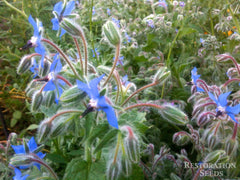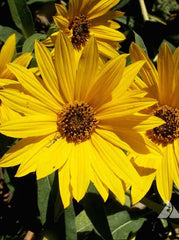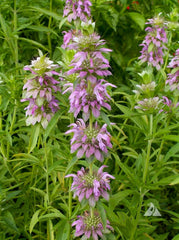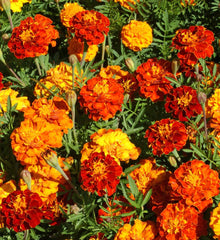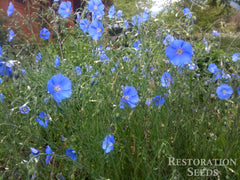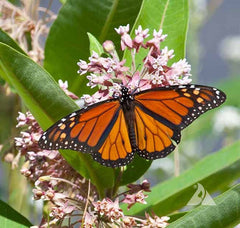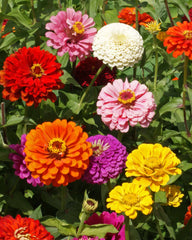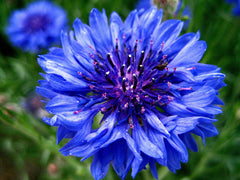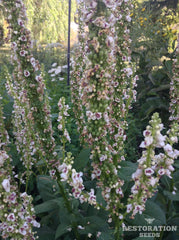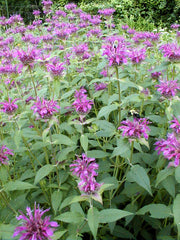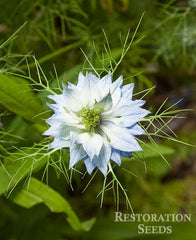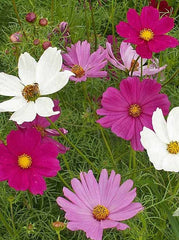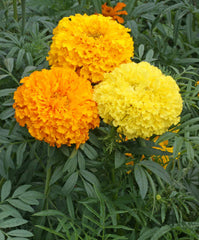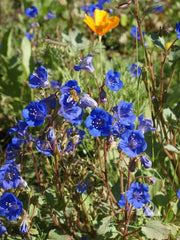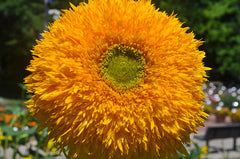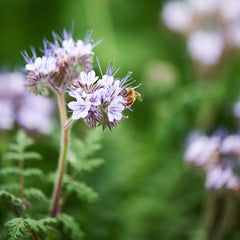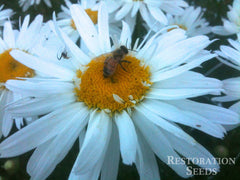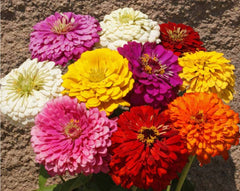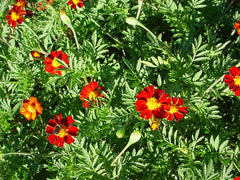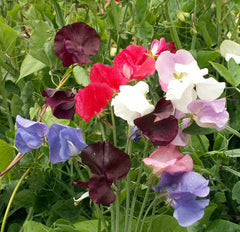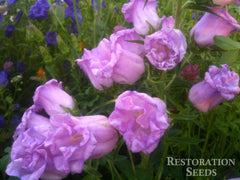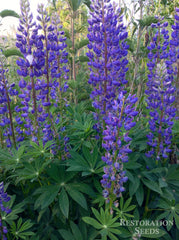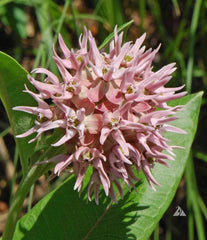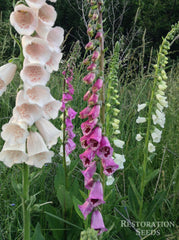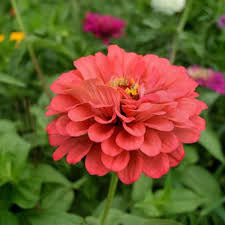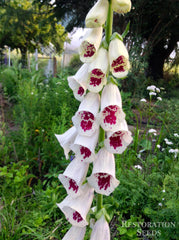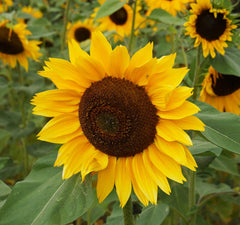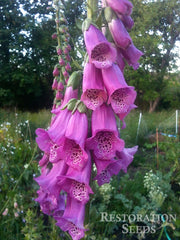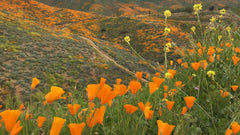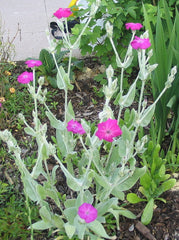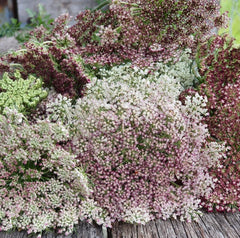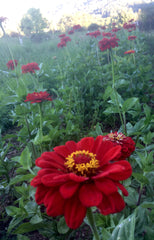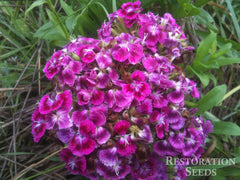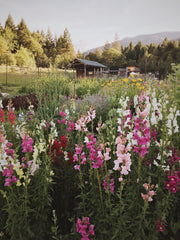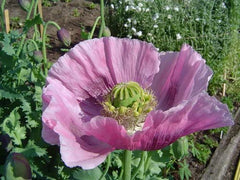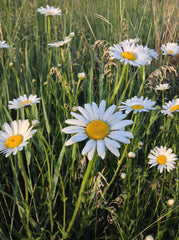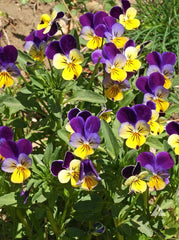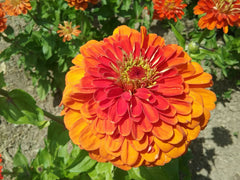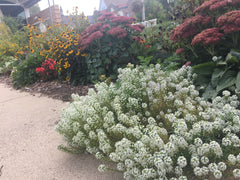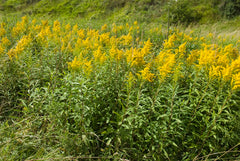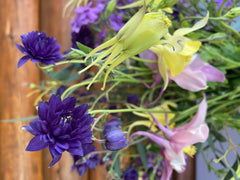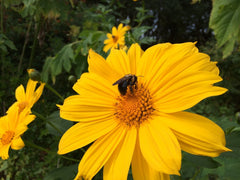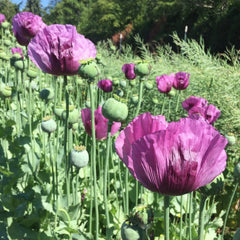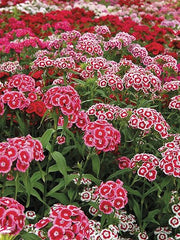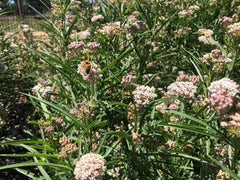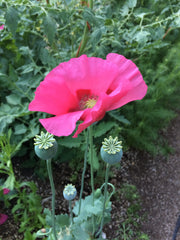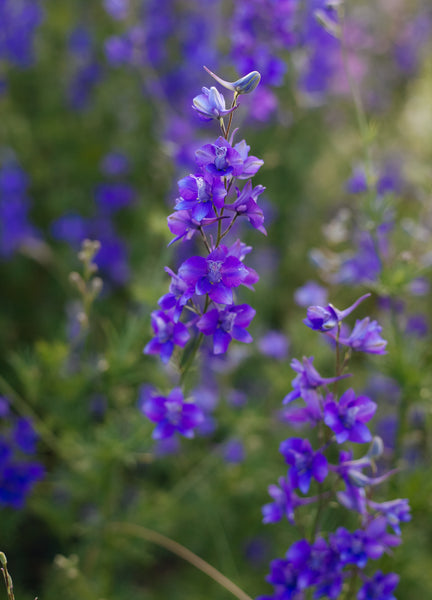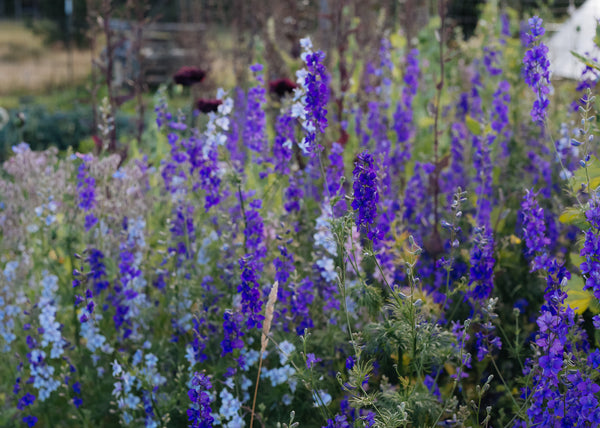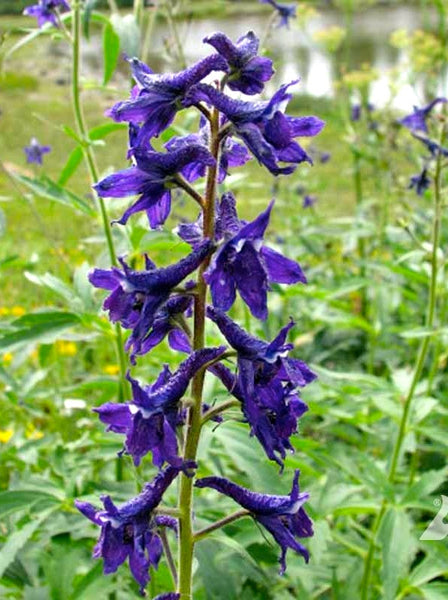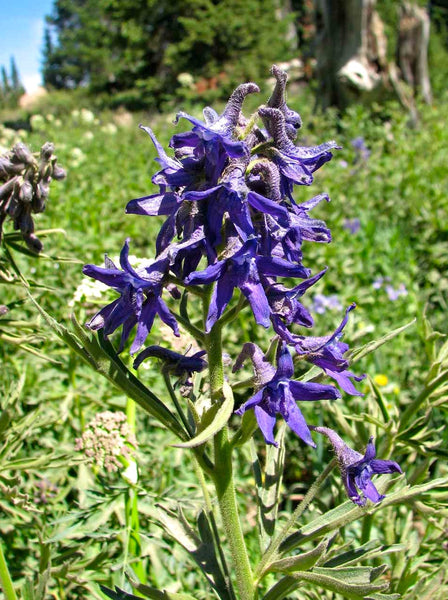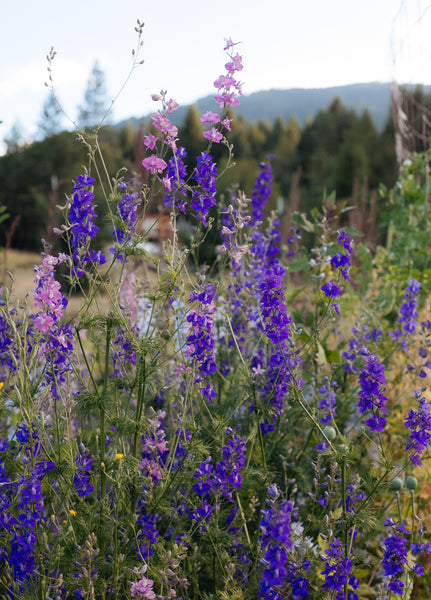Larkspur
"Delphinium occidentale
HOW TO GROW LARKSPUR
Start indoors 4–6 weeks before last frost, plant out after frost. Direct sow group of 4–6 seeds every 1–2’ in fall four weeks before frost. Thin when 3” tall to 1 every 1–2’. Prefers full sun but will grow in part shade. Delphiniums prefer acidic soils to bloom and to maintain their bright purple blue color. Test your soil, if alkaline, reduce the soil’s pH is to add organic matter such as coffee grounds, fruit and vegetable peels, etc. Divide root ball after 3–4 years. Sow 11 pounds per acre. Soil pH 5.2–5.5. Hardiness zones 3–8. Perennial.
Usual seed life: 3–5 years.
Planting Depth 1/8"
Soil Temp. Germ. 70–75˚F
Days to Germ. 10–15
Plant Spacing 1–2’
Row Spacing 3–4’
Days To Maturity 1 year
Part Shade, Moist Well Drained Soil
Usual seed life: 3–5 years.
Planting Depth 1/8"
Soil Temp. Germ. 70–75˚F
Days to Germ. 10–15
Plant Spacing 1–2’
Row Spacing 3–4’
Days To Maturity 1 year
Part Shade, Moist Well Drained Soil
Larkspur Seed Count
1 Ounce ≈ 8,100 seeds
- 150 Seeds$4.10
Larkspur grows beautiful columns of delicate purple, dark blue, sky blue, lilac, pink, and pale pink flowers, although most flowers are dark blue. Plants grows 3–5’ tall, and will continuously produce flowers all the way until the end of summer if harvested regularly. They tend to bloom most in the cooler weather of...
Larkspur grows beautiful columns of delicate purple, dark blue, sky blue, lilac, pink, and pale pink flowers, although most flowers are dark blue. Plants grows 3–5’ tall, and will continuously produce flowers all the way until the end of summer if harvested regularly. They tend to bloom most in the cooler weather of late spring and early summer, and are pollinated by butterflies and bumble bees. In milder climates, Larkspur will continue to bloom through fall as they are frost tolerant. Ideal for the native wildflower garden. All parts of these plants are considered toxic to humans and livestock. Larkspur can cause cattle poisoning on range lands in the western part of the country. Larkspur grows native in high-elevation areas, and many ranchers delay moving cattle onto such ranges until late summer when the toxicity of the plants is reduced. Also known as Tall Mountain Larkspur and Delphinium. Tags: Color: Purple.
Delphinium occidentale is native to the range and alpine American central and Noutherwest. Delphinium is a genus of about 300 species of perennial flowering plants in the buttercup family, native throughout the Northern Hemisphere and also on the high mountains of tropical Africa. The name Larkspur originated from Tudor England. The name Delphinium derives from the ancient Greek and Latin for "dolphin", referring to the shape of the nectary. The common name Larkspur is shared between perennial Delphinium species and annual species of the genus Consolida.
Delphinium occidentale is native to the range and alpine American central and Noutherwest. Delphinium is a genus of about 300 species of perennial flowering plants in the buttercup family, native throughout the Northern Hemisphere and also on the high mountains of tropical Africa. The name Larkspur originated from Tudor England. The name Delphinium derives from the ancient Greek and Latin for "dolphin", referring to the shape of the nectary. The common name Larkspur is shared between perennial Delphinium species and annual species of the genus Consolida.
Learn More
Meet Your Farmer
We promote fair trade, organic practices and environmental responsibility throughout the Restoration Seeds supply chain. Below are the family farmers and seed suppliers who bring our open pollinated seeds to you.
Idyllwild
Conventional
Seed grower since 2018


Idyllwild was born of our joyful curiosity and celebration of nature’s diverse gifts. Following nature’s model of open dispersal and dissemination, we share these seeds with you and invite you to play in the garden of abundance. We learn from nature and she has taught us to live and think in terms of “abundance” instead of “scarcity”. Diversity - in all forms, from genetic to creative expression - is the heart of resilience. We enjoy experimenting with myriads of flavors, colors, and textures and the world opens to us in infinite possibilities. As a result, we are nourished in body, mind, and spirit."
Reviews
